Peter MALONE
Saturday, 09 October 2021 13:02
Honest Thief
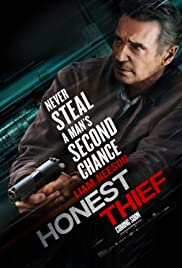
HONEST THIEF
US, 2020, 99 minutes, Colour.
Liam Neeson, Kate Walsh, Jai Courtney, Jeffrey Donovan, Anthony Ramos, Robert Patrick.
Directed by Mark Williams.
An agreeable title. How does a thief become honest? The answer is that, when dealing with the FBI, it is not so easy.
This is a film for 2020 audiences, especially older audiences looking for some kind of easy entertainment in difficult times. So, a thriller which is not too violent (although there are some shootouts and car chases). A thriller which actually has romance built in – romance certainly being a motivation for a thief to be honest.
And, we have Liam Neeson. Neeson has played many serious roles (we remember Schindler’s List, Kinsey, Silence). And for more than 10 years he has built up quite a catalogue of action shows. With his height, his speaking voice, his strong presence, he brings something of gravitas to any character he plays. And, this is especially the case here, with Tom – a former Marine, demolitions expert, family crisis, and a series of bank robberies. But, especially when he encounters divorcee, Annie (Kate Walsh very sympathetic), it is time for honesty.
The trouble is that when he phones the FBI, they have heard all kinds of confessions before, encountered all kinds of hoaxes. They are not particularly enthusiastic. This is the case with the senior agents, played by Robert Patrick and Jeffrey Donovan. They hand on the mission to the younger agents, played by Jai Courtney and Anthony Ramos. They meet with Tom, they go off to recover some of the money. All could go well in furthering their careers.
But, of course, it doesn’t.
In finding some of the money, quite easily, there is a huge temptation to steal it – dishonest thieves. Unfortunately, the brains behind the stealing, Nivens, Jai Courtney, is strong on impulse rather than planning which has dire consequences. But it brings back Tom into serious action, handy with the gun, skilled in making bombs, expert driver.
So, this is where the action comes in – and some emotions because of Nivens attack on Annie (who managed the storage where the money has been kept and has possession of security footage).
The filmmakers keep a fairly good balance between the action and the romance (and, possibly, only one brief instant of swearing, which is a surprise). The comments on the film from your average audience have been very favourable. They enjoyed it. However, the fans of Liam Neeson’s earlier thrillers are begging him to insert much more action – and one of them suggests very earnestly that he cut out much of the romance!
Honest Thief was never intended to be a great cinema experience – but, most older audiences will find interest and entertainment.
1. The title? The background of bank robberies? Motivations? Desire for honesty? The experience of love?
2. The blend of action, thriller, chases, shootouts, betrayals? Romance? An older audience?
3. The credibility of the plot, Tom and his life, the Marines, his skills, his father, the robberies, keeping the money, not spending it, the decision to give himself up? The betrayal by the FBI agents?
4. The city setting, apartments, hotels, FBI offices, storage? Homes, streets? The musical score?
5. Liam Neeson, his action films? Age? Experience? Tom, the visualising of the robberies? The year later? Wanting to store the money, the encounter with Annie, the immediate connection? Tom and his wanting love, Annie, her divorce, new life, response?
6. Tom, phoning the FBI, the reaction of the agents, the many claimants and hoaxes, disregard? Agent Baker, getting Meyers to listen? The young men going to Tom’s apartment? Baker, the phone call, going to the apartment, his being shot?
7. Meyers, his background, the divorce, the dog and the presence of the dog throughout? Sceptical about Tom? His reaction to Baker’s death? Believing the agents? Contacted by Tom, a different perspective? His support of Tom? The confrontation with Nivens? Dealing with agent Halll? The issue of the bomb, Nivens and his fears, the setup and his arrest?
8. Tom, the phone calls, the admission of the truth, not being believed, his waiting for the agents? The young men? The information about the storage? But not all the money? The going to the storage, meeting Annie, finding the boxes, Nivens and his decision, the pressure on Hall? Taking the money, storing it? The return to the apartment, confronting Tom? Confronting Baker, Nevin shooting him? The consequences? The impact on Hall (and the scene with his wife and his guilt feelings)?
9. The shooting, the guns, the fight with Tom, his leaving, the hotel, his tactics, the contact with agent Meyers?
10. Annie, the security footage of their taking the boxes? The attack on Annie, the violence, Tom taking her to the hospital? Surveillance? Tom later taking and hiding her?
11. Tom buying the bomb equipment? Creating the bonds? The phone call to Nivens, the bomb in his house, the explosion? Tom confronting Hall, Nivens arriving, his shooting Hall?
12. The bomb in the car, Tom and his threats, Nivens and his driving, his care, fear, phoning in, the setup, the bomb expert, no fuse, his being arrested?
13. Tom giving Annie y the key, Meyers and the extra storage room, finding all the money? And Tom giving himself up? The future?
Published in Movie Reviews
Published in
Movie Reviews
Saturday, 09 October 2021 13:02
Girl in the Headlines, The
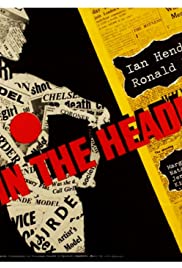
GIRL IN THE HEADLINES
UK, 1963, 90 minutes, Black-and-white.
Ian Hendry, Ronald Fraser, Margaret Johnston, Natasha Parry, Jeremy Brett, Kieron Moore, Peter Arne, Jane Asher, Rosalie Crutchley, Robert Harris, Duncan Macrae, Zena Walker, James Villilers, Patrick Holt.
Directed by Michael Truman.
This is a little-known police investigation murder mystery from the early 1960s. Though the police methods and styles are of the period, with its limited technology, this is still an entertaining police investigation.
The inspector at the centre is played by Ian Hendry (who was to have a successful career in films and in television, and in police investigations). He is rather quiet and introspective, loves opera, drives an expensive car (which has reminded many viewers of Inspector Morse), works well with his assistant, Ronald Fraser, making allowances for his lack of culture information (which has reminded many viewers of Lewis). One wonders whether Colin Dexter saw this film!
The investigation focuses on the death of a model who works as an escort in a club, was difficult at school, became pregnant and a termination, is alienated from her family, especially her mother (a somewhat aristocratic Margaret Johnston).
There is quite a range of suspects given the young woman’s connections. She lives in the same building as a television personality, played in his rather superior, even supercilious, style by James Villiers (insinuated as gay and then shown to frequent a gay club, and this was only three years since the release of Victim). There is her friend from school with whom she has taken up again, Natasha Parry. Much more sinister is Natasha Parry’s artist husband, Peter Arne, a very unpleasant personality who has provided a variety of alibis for the time of the murder. Then, there is his younger brother, played by a very young Jeremy Brett in pre-Sherlock Holmes years, who is in love with the dead woman, plays a boat on the river. And then there is the manager a club which was a base for the model and her escort work, Kieron Moore.
The investigation goes on apace, the inspector sometimes weary, relying on his assistant to do a lot of the footwork. There are also scenes of the detective at home, his rather wilful 16-year-old daughter, Jane Asher, and his sympathetic and supportive wife, Zena Walker.
Besides the strong cast of British character actors, there are some welcome cameo performances by Rosalie Crutchley and Duncan Macrae as a crusty old boat captain, Patrick Holt as the dead woman’s mother’s friend.
With a buildup to a climax, a great deal about drugs, smuggling, dealing, and the audience thinking that the mystery is solved, the actual solution comes rather unexpectedly and quickly at the end.
1. A 1960s British police investigation, murder mystery?
2. The black-and-white photography, the London settings, buildings, flats, homes, police precincts, clubs, the river, boats? The musical score?
3. The title, provocative? The dead girl, her background, at school, pregnant, expelled, termination, alienation from her mother and family, coming to London, model, at the club, escort? With her schoolfriend? David Dane and his blackmailing? The drug world? The interview with her mother, the alienation, the pregnancy by the mother’s partner?
4. Inspector Birkert, Ian Hendry, his personality, serious, opera loving and listening to the music, his car, his daughter at 16 and precocious, arguments, the support of his wife? His working with his assistant, Saunders? The relationship between the two, Saunders doing the footwork, always ready, but not as well educated as Burkert?
5. The body, the police, the murder, investigating the woman, getting the information, the cumulation?
6. David Dane, living in the same building, his television reputation, Birkert’s daughter and her admiration? His supercilious attitude, his image of himself? The issue of blackmail? Drugs? The possibility for him to be the murderer? His going to the gay club, the police presence? His murder?
7. The characters at the gay club, the police, the respectable customers?
8. The visit to the respectable businessman – and the revelation of his involvement?
9. The visit to the club, the manager and his self-assurance, welcoming the police? His knowledge of the victim? The later involvement, the club as a centre for drug dealing?
10. The murdered woman’s schoolfriend, the police visit, nervous? Her husband, artist, unpleasant personality, dominating, his variety of alibis? The later revelation of his drug dealing, the boats? His relationship with his brother, dominating him? Using him?
11. Jordan, relationship with his brother, his infatuation with the murdered girl, knowledge of the drugs, trying to help her? His work on the river? His collaborating with Inspector Birkert? The police going to the river, information about boats, drugs, the thugs on the river and the violence, the crusty old captain, the pursuit of Sam, the boarding of the boat, the revelation about the drugs, the involvement of so many characters, the manager of the club?
12. The interview with the murdered girl’s mother, aristocratic touches, the alienation? Her friend and his presence? The final confrontation, her confession to the murder, the motivation, her boyfriend, the pregnancy?
13. The Opera singer, her operation, bad days, her housekeeper and devotion, the inspector’s visit, listening to the record, seeing the shrine? And her being connected with the drug dealers?
14. A complex plot, frank themes, the early 1960s in terms of the drug world, prostitution and escorts?
15. And the suddenness of the solution?
Published in Movie Reviews
Published in
Movie Reviews
Saturday, 09 October 2021 13:02
Meet the Wildcat
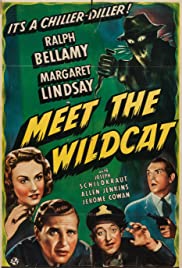
MEET THE WILDCAT
US, 1940, 65 minutes, Black-and-white.
Ralph Bellamy, Margaret Lindsay, Joseph Schildkraut, Allen Jenkins, Jerome Cowan.
Directed by Arthur Lubin.
This is the kind of story that would be a one-hour episode in a television series. It has an exotic setting, an art gallery-museum in Mexico City, as well as police officers. It also has an exotic story about a cat burglar who steals works of art from the museum, signing himself Wildcat. It is also in the vein of the screwball comedy rather than a serious police investigation and the leading lady is one of those very strong-minded investigative reporters.
The reporter is played with vigour by Margaret Lindsay – although, she makes so many errors of judgement leading to difficulties that it does not quite fit with her strong character. And there is Ralph Bellamy, elegant, with a cane, caught by the journalist as he steals a painting. Obviously, the Wildcat. The journalist goes to the police but, surprisingly, they give the impression of supreme indifference.
The other main characters include the proprietor of the museum, played with his usual sinister manner by Joseph Schildkraut. There is the editor of the paper, Jerome Cowan, getting himself entangled with some of the ladies of the city. And, a taxidriver from Brooklyn, played with his usual comic style by Allen Jenkins, a rather unusual presence in Mexico City (though the story of his driving from New York has a little plausibility).
Half way through, it is revealed that Ralph Bellamy is New York police rather than the Wildcat. The journalist is all for tracking him down, then finding out the truth, then get him entangled with the villain and his henchman.
A sting is set up, but the journalist makes some more faux pas and it looks as though the sting will be a failure. In fact, the three main characters are all tied up – but, find a way of signalling an SOS to the police and the raid is successful.
The cast is competent and the film was directed by Arthur Lubin, who made many small-budget supporting features but was soon to direct some Abbott and Costello comedies and, by 1950, start to direct a number of the Francis, the talking mule comedies.
Published in Movie Reviews
Published in
Movie Reviews
Saturday, 09 October 2021 13:02
Morning Call
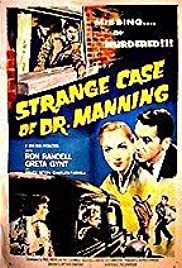
MORNING CALL
UK, 1957, 75 minutes, Black and white.
Greta Gynt, Ron Randell, Garard Green, Bruce Seton, Peter Fontaine, Virginia Keiley.
Directed by Arthur Crabtree.
This is a small British drama of the mid-50s about a kidnapping and, when that is solved, about the continued pursuit of the kidnapper and detection work.
Greta Gynt is a wealthy woman whose doctor husband receives a call in the middle of the night, goes to see a patient, is abducted. She receives a number of notes from the kidnapper with the demand for money and for her not to go to the police. Her lawyer knows an American investigator, played by Ron Randell, and persuades him to come to work with Scotland Yard in the investigation.
While the film focuses on the anguish of the wife as well as her determination, it also shows the work of Scotland Yard and of the American investigator, discovering clues, going through crank letters and calls, appealing for witnesses. One witness, a local prostitute, comes forward but, wanting to get her photo in the paper, declares she could identify the kidnapper instantly. Which leads, of course, to his picking her up, and her not recognising him, her death.
The kidnapper uses all kinds of contacts to reach the wife, setting up a variety of rendezvous meetings, ultimately a cemetery. The wife is asked to travel by train and throw the money out of the train window at a specified signal. The train is stopped. The police and the investigator scours the countryside, the kidnapper disguising himself as a mute fisherman and so eluding them. However, the body of the kidnapped doctor is found.
The film does not end there but continues on with the investigation, with the clues, checking the notes passed from the ransom oney, identifying the location where the kidnapper lives, his penchant for pipe tobacco, where he buys his tobacco, some information as to where he works in demolition. He is caught, pursued, but falls to his death in the demolition work. And the motivation is revealed that the murdered had killed his sister in a car accident six years earlier.
Of its time and of police methods of those days, it is nevertheless interesting to see the workings of a kidnapping case.
Published in Movie Reviews
Published in
Movie Reviews
Saturday, 09 October 2021 13:02
Barakah Meets Barakah
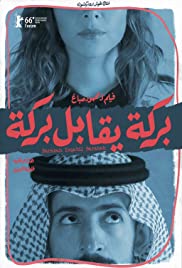
BARAKAH MEETS BARAKAH
Saudi Arabia, 2016, 88 minutes, Colour.
Hisham Fagesh, Fatima al Banawi, Reem Habib.
Directed by Mahmoud Sabbagh.
In one sense, the title seemed to indicate that Barakah is actually meeting himself. However, when he becomes infatuated with the top Instagram model, Bibi, it is later revealed that her name is also Barakah.
This is a romantic comedy set in Saudi Arabia. There was some welcoming of the film as a pleasant romance but some strict Muslim commentators were strongly condemnatory of its flippant attitude, its permissiveness, disregard for aspects of Muslim law.
But the film does reflect some of the changes happening in Saudi Arabia in the 21st-century, at the end with a collage of memories of what the country was like decades earlier, the more open styles of, at least, upper-class families, women and their dress.
After the drama, Wajda, this is the next Saudi Arabian film. The director was to go on to his second film in 2018, Amra and the Second Marriage, a focus on a middle-aged woman and her lifestyle, traditional, the prospect of her husband marrying again in order to have a son, the impact on her, her visiting imams, lawyers, watching women’s videos from the United States – leading to resentment and an outburst at the wedding celebration.
It will be interesting if the director has the opportunity to make more films and to see his perspectives on life in Saudi Arabia.
1. A rare film from Saudi Arabia in the 2010s? The Saudi audience? For international audiences?
2. The sensitivity of strict Muslim audiences, their condemnation? The film as too permissive? Disrespect for the Koran and law?
3. The Saudi settings, the city and suburbs, the streets, cars, homes, photo shoots at the water, the cruise on the water? Atmosphere? Musical score?
4. Barakah’s story, his age, background, his telling the story of his mother and her death, the stories? His growing up? His uncle, rough attitude, drinking, Barakah looking after him? In the neighbourhood, with the midwife and her care for him? His job, for the municipality, interviewing people, selling goods in the open, the photo shoot, the letter of the law,
his concessions?
5. The introduction to Bibi, the glamour, the photo shoot, her attitudes, clothes and style, Instagram heroine, finances? Her background, explaining she was an orphan, her work in the shop, fashion and design, the wilful attitudes? Her mother, founding the company, the style and design of the clothes, customers? Her adopted daughter? The arguments at home? Her stepmother, the stepfather, wanting a child, Barakah and his meeting with the stepmother, casual clothes, discussions, referring to the midwife? And the fact that there was a pregnancy, the celebration, the costume party, the midwife present?
6. Bibi, acknowledging her name of Barakah, her enjoyment of Barakah’s company, his gifts, appropriate and not, her moodiness, sulking? The cruise? The band playing? Alienation from her stepmother, separation from Barakah?
7. The collage of photos and film clips, going back into the past, life and styles in Saudi Arabia, seeing films, Italian films, the terrorist experience, the clamping down, the closing of the cinemas? Restrictions?
8. Barakah, his friend at the theatre, the choice for Ophelia, the rehearsals, the costume, the performance, the few in the audience? His telling the truth to Barakah?
9. A glimpse of Saudi life, in public, in private, the characters quite secular in their behaviour, minimal reference to Islam? Saudi Arabia in the 21st-century?
Published in Movie Reviews
Published in
Movie Reviews
Saturday, 09 October 2021 13:02
Lady Windermere's Fan

LADY WINDERMERE’S FAN/ OSCAR WILDE SEASON
UK, 2018, 111 minutes, Colour.
Grace Molony, Joshua James, Samantha Spiro, Jennifer Saunders, Joseph Marcell, Kevin Bishop, Roger Evans.
Directed by Kathy Burke.
This is a film of the stage version of Oscar Wilde’s play, filmed at the Vaudeville Theatre in London, 2018. The play was directed by veteran actress, Kathy Burke, who appears with the cast for the final curtain call.
The film offers an opportunity to listen to the Oscar Wilde dialogue with some familiar quotations, giving into temptation, looking at the stars from the gutter… And the dialogue is very well articulated and performed by the cast. In fact, Grace Molony is solid as Margaret, Lady Windermere, a young woman who believes her mother died soon after she was born, that her beloved father died of a broken heart. She has married well and has a boy. She has a place in society – and all is well or should be well.
In the first act, she has a visit from the Duchess of Berwick and her submissive daughter, Lady Windermere is shocked at suggestions that her husband is unfaithful. The Duchess is unrepentant in stressing the infidelity, naming a woman who is visiting and trying to become a member of society, Mrs Erlynne. And the suggestion that many men are visiting her. And that Lord Windermere is financing her – with Lady Windemere tempted to look at his accounts.
She is visited by Lord Darlington who is infatuated with, wanting her to divorce husband. It is her birthday and her husband has brought her a fan as a gift. He comes home, discovers she has looked at his accounts, they have a great quarrel but he wants to invite Mrs Erlynne to the birthday party.
Many society men turn up at the birthday party including Lord Darlington. Lady Windermere is upset about Mrs Erlynne’s invitation and asks the butler, Parker, to annunciate clearly the name of each guest (and there is comedy in his exaggerated doing so). There is a lot of discussion amongst the men, especially about respectability, the behavioural women site, the behaviour of men. Duchess of Berwick’s brother is infatuated with Mrs Erlynne (and Joseph Marcell plays the role, indicating how British theatre makes roles available to actors of whatever race).
Lady Windermere makes the decision to go to Lord Darlington. Mrs Erlynne arrives, a long dialogue in where Mrs erlynne, the audience now knowing that she is Margaret’s mother, tries to persuade her to go. The men arrive, Lady Windermere’s fan is discovered, Mrs Erlynne having distracted the men so that Lady Windermere could escape, and she then claims that she has brought the fan. Once again, there is a lot of discussion about the role of men and women in London society.
In the last act, the audience is wondering whether Lady Windemere that Mrs Erlynne is her mother. Her husband arrives, Mrs Erlynne also and Lord Windermere is quite hostile to her. Mrs Erlynne wants a photo of her daughter, promises never to reveal the truth but a strong bond is built between Mrs Erlynne and Lady Windermere.
There is an amusing interlude between acts three and four where the Duchess of Berwick and some of the players come on stage for a musical performance, ultimately urging the audience to join in. Since the Duchess of Berwick is played by Jennifer Saunders, she is a strong presence on stage (a perhaps more vulgar variation on lady Bracknell) and delivers her lines with strong relish.
This was a play for the society audiences in London the 1890s, Wilde having a strong reputation before his downfall. It is something of an aristocratic moralising comedy piece.
Published in Movie Reviews
Published in
Movie Reviews
Saturday, 09 October 2021 13:02
Mantrap/ 1953
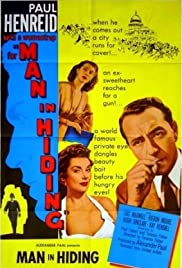
MANTRAP
UK, 1953, 73 minutes, Black and white.
Paul Henreid, Lois Maxwell, Kieron Moore, Hugh Sinclair, Lloyd Lamble, Bill Travers, Kay Kendall.
Directed by Terrence Fisher.
This film was directed by Terrence Fisher, director of many strong dramas but who was to emerge at the studios where he worked, Hammer Studios, with his direction of the first Hammer horror films of Dracula and Frankenstein, starring Peter Cushing and Christopher Lee.
This is as brief murder mystery, London setting, the man accused of murder and imprisoned, his escape, his wanting to make contact with his former wife who had visited him in prison. A genial investigator, friend of the wife, tracks the man down, shelters him, then introduces him at a social whereby various suspects are present and the murderer is unmasked.
The wife is played by Lois Maxwell, Canadian actress, who was almost a decade later to become immortalised as Miss Moneypenny in the James Bond films. Paul Henreid was a Hollywood star (Now Voyager, Casablanca…), He took a stance against Senator Mc Carthy and the Communist investigations, was blacklisted, went to England to make a few films including this one, returned to Hollywood and was invited by Alfred Hitchcock to direct episodes and Henreid had a very strong career in television direction.
Kieron Moore was a strong actor (Vronsky alongside Vivien Leigh in Anna Karenina, 1948). Bill Travers was to emerge as a genial star. Kay Kendall, a very bright screen presence, was at the beginning of her very short screen career.
1. London drama? Thriller? Murder mystery?
2. The settings, the fashion world, the newspaper world, investigations? Clubs? The musical score?
3. The focus on Thelma, her background, in the world of fashion, social reporting, her relationship with the editor? The background of her marriage, to Speight, his being accused of murder, conviction, visiting him in prison? His escape and her concern? The police, protection? The friendship with Hugo Bishop? Relying on him to find her husband? Her not being divorced, calling herself Mrs Tasman, her relationship with Victor? The phone calls, keeping in touch, his absence and return?
4. Hugo Bishop, as character, his background, friendship with Thelma? Vera as his scretary? Her devotion to him? Participating in the investigation?
5. Hugo, following the clues, knowing Speight, the art dealings, the artist asking him to investigate, the artist’s return to London?
6. Speight, his character, background, marriage to Thelma, the murder, his fall, amnesia? The escape from prison? Hiding? Hugo finding him? Taking him home? Hugo’s contact with the various suspects?
7. The editor of the paper, his wife and family, interest in Thelma? The doctor? The photographer and his wanting news and scoops?
8. The party, dancing, Speight meeting Thelma? The other men and their presence?
9. The police, confrontations? Denials? The editor, his leaving, the pursuit, the return to the scene of the crime, his fall and death?
10. Genial central characters? The innocent victim? The detection? The solution?
Published in Movie Reviews
Published in
Movie Reviews
Saturday, 09 October 2021 13:02
Mr District Attorney
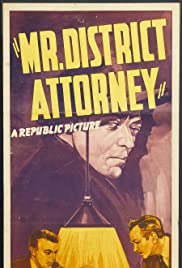
MR DISTRICT ATTORNEY
US, 1941, 69 minutes, Black-and-white.
Dennis O 'Keefe, Florence Rice, Peter Lorre, Stanley Bridges, Minor Watson, Charles Arnt, Joan Blair, George Watts.
Directed by William Morgan.
Mr District Attorney is a pleasant supporting feature, about the law in the US, 1940s style, about political corruption, about money dealing, along with murder and investigation.
The tone is reminiscent of the screwball comedies of the 1930s – and this was released in the same year as His Girl Friday with the emphasis on the female journalist. Here she is played by Florence Rice, an investigative reporter, full of initiative. The title of the film belongs to Dennis O’ Keefe, from a wealthy family, highly educated, top marks in law studies, but rather naive in handling the real world.
The film uses the device of the two central characters frequently bumping into each other, while buying hats, while visiting the district attorney, but their combining efforts to investigate a case of corruption. This material is the usual – a businessman with links to a criminal who has embezzled a great deal of money, the crooked businessman running against the district attorney for election. Then there is a subplot which becomes part of the main plot – a brassy showgirl, the meek banker who stole money for her – but stole it from the account of the embezzler.
Mr District Attorney appears in courts, uses principles against practicality, frustrates judges, the actual district attorney lumbering him with the embezzling case hoping it will occupy him. There are many leads, the journalist and the lawyer finally caught up in a plan which will trap the businessman as well as the embezzler, only for them to misinterpret the situation and the wrong story is printed.
The two leads play off each other very enjoyably. And, after 30 minutes or so, who should turn up as the sinister embezzler but Peter Lorre!
1. An enjoyable screwball comedy, 1930 style? The law? Journalists? Criminals? Murder mystery and investigation?
2. The New York settings, the world of newspapers, the world of the law, courts, the murder settings, the chase, the wharf? The musical score?
3. The title, the focus on Jones? His eccentric name? The initial encounter with Terry, the hat shop? The advice? At the district attorney’s office? Jones and his background, his uncle, name, summa cum laude, in the court, antagonising the judge, the Santa Clauses and their being let go, later their fighting in the street? The DA and his annoyance, giving Jones the embezzlement case? His earnest testing the case, going with Terry to meet the journalists, the leads? Back in the court, the meek man and Jones and his suspicions, the man being bailed, following up the actress and her win at the races, the suspect money, the man being killed, with the actress, Terry entering like a burglar, the actress being shot? The background of the businessman, his standing for election against the DA?
4. Terry, the embodiment of the successful female journalist, strong-minded? Bumping into Jones, taking him to the bar, working with him, getting into the apartment, the death of the actress?
5. The DA, honesty, standing for re-election? The contrast with Barrett and his cronies?
6. The embezzler, Peter Lorre, turning up, strangling the man who had robbed him, shooting the actress? Ringing Barrett, the rendezvous at the wharf, the sequence earlier with his wife and her vengeance, her shooting him?
7. The setup, the note, Jones and the camera, the irony of the man he had got off in court helping him? Terry, in the boot of the car, hearing the shot, the wrong story?
8. The car chase, the police, the teargas, happy resolution?
Published in Movie Reviews
Published in
Movie Reviews
Saturday, 09 October 2021 13:02
Witness Chair, The
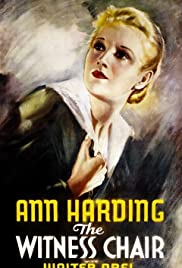
THE WITNESS CHAIR
US, 1936, 64 minutes, Black-and-white.
Anne Harding, Walter Abel, Douglass Dumbrille, Frances Sage, Maroni Olsen, Margaret Hamilton, Maxine Jennings, William 'Billy' Benedict, Paul Harvey, Murray Kinnell, Charles Arnt, Frank Jenks.
Directed by George Nicholls Jr.
This is an interesting court case film which keeps audience attention. From the beginning, the audience knows that Paula, a sympathetic Anne Harding, has something to do with the death of the head of the company. The audience sees details of her covering the situation, returning home, comforting the daughter of the associate who is planning to elope with the boss.
The body is found the next day, an arresting performance by the cleaner who discovers the body, the arrival of the Lt, Moroni Olsen, and his rather buffoonish assistant. What seem to be suicide, and a suicide note, is discerned as murder given the circumstances of the body. Suspicion is on the associate, Jim Trent, Walter Abel, and he is arrested.
Most of the brief running time of the film is in the court room, the interrogation of the various members of the staff (including a sharpish Margaret Hamilton, a would-be-glamorous Maxine Jennings, a young man intending to be a singer, Billy Benedict, the elevator man, Frank Jenks).
The main testimony is given by Paula – and the film provides many flashbacks to explain the situations and the characters, the revelation of the embezzlement of money, false accounts, bribes and the setting up of the victim.
The actual situation is shown in flashback – and, while Paula is reunited with Jim Trent, the film ends before any kind of detail is given about what will happen in terms of criminal prosecution and justice.
1. A court drama? Interesting characters, situations?
2. The settings, the city, the skyscrapers, the eighth floor, offices? Apartments? The courtroom? The musical score?
3. The opening, Paula, her behaviour, suspicious, the room, locking the door, pressing the elevator button, walking down the stairs? The cleaner, getting the key from the caretaker, discovering the body, the police, the doctor, looking like suicide, looking like murder?
4. Paula, her demure look, sympathetic? At home? Connie coming to stay with her? Her situation, wanting to elope with the boss? Paula and her devotion to Jim Trent?
5. The next morning, the staff coming into work, the introduction to each of them, Grace Franklin, the accountant, her loyalty, reaction? Benny, his age, general jobs, wanting to be a singer? Tillie Jones? Secretary to Trent? The elevator man?
6. In the court, the presiding judge and his attitude? The legal defence? The questions, personalities, the extreme badgering of the witnesses? The jury?
7. The cross-examination of the staff and their various reactions, Grace and her speaking her mind and weeping, Benny and the touch of celebrity, few questions? Tillie, the glamour, her performance, the eye of the jury? The elevator man and the possibilities?
8. The interview with the auditor and the revelation of the bribe?
9. Jim Trent, his character, the issue of the suicide note, Whitaker and his death, exonerating Trent? Trent and his background, the death of his wife, bringing up Connie, strict? His relationship with Whitaker? Friendship? The staff overhearing the conversation through the vent?
10. Connie, giving testimony, the revelation of the letters, her plan to elope?
11. The flashbacks, filling in the characters, the details of what happened?
12. Paula, her love for Jim Trent, working with Whitaker, hearing the conversations, the auditor and Whitaker’s interview with him, Whitaker embezzling the money, wanting to blame Trent, the bribe to the auditor and his accepting it? Paula and the boat tickets, tearing them up? The gun, Trent’s gun, threatening Whitaker, making him write the confession and sign
it? The struggle, the gun going off? Paula and her covering everything?
13. Paula, the outburst in the court, claiming to be guilty? Trent comforting her? The future?
Published in Movie Reviews
Published in
Movie Reviews
Saturday, 09 October 2021 13:02
Nurse's Secret, The

THE NURSE'S SECRET
US, 1941, 64 minutes, Black and white.
Lee Patrick, Regis Toomey, Julie Bishop, Ann Edmonds, George Campeau, Claire Blandick, Charles Waldron, Charles Trowbridge, Leonard Mudie.
Directed by Noel M.Smith.
Small-budget supporting feature from Warner Brothers in the early 1940s. It involves a police investigation into what looks like a suicide, could be an accident, but is actually murder.
This is a star vehicle for Regis Toomey as the police investigator, called in when his elderly aunt, Julia, Claire Bland it, discovers the dead body of her nephew, allegedly cleaning his gun. The scene shifts to a hospital where Ruth, character actress Lee Patrick, feels she is being stood up by the investigator but actually is invited by him to come to the house, to look after the elderly lady, to help with the investigation. There are some sparring between the two throughout the film as well as their collaboration in detective work.
The old lady act suspiciously and has had no time for her nephew. There is a sinister butler in the house with his wife – and the burning of a newspaper found at the scene of the crime. Later, the old lady is poisoned.
Also in on the drama are the family doctor as well as the family lawyer and his secretary.
There are further complications with a young woman that Ruth encounters and then comes to the house – it turning out that she had been secretly married to the dead man. Also coming to the house was her other suitor who wanted to get back documents concerning the marriage.
Also key to the murder is the extensive life-insurance that the dead man took out, his aunt wanting to have it.
Quite a lot of shenanigans around the house, especially at night and intruders.
However, the detective plays a number of hunches, organises some setups – especially with Ruth pretending to be able to get fingerprints.
And the lawyer and his assistant did it!
Published in Movie Reviews
Published in
Movie Reviews